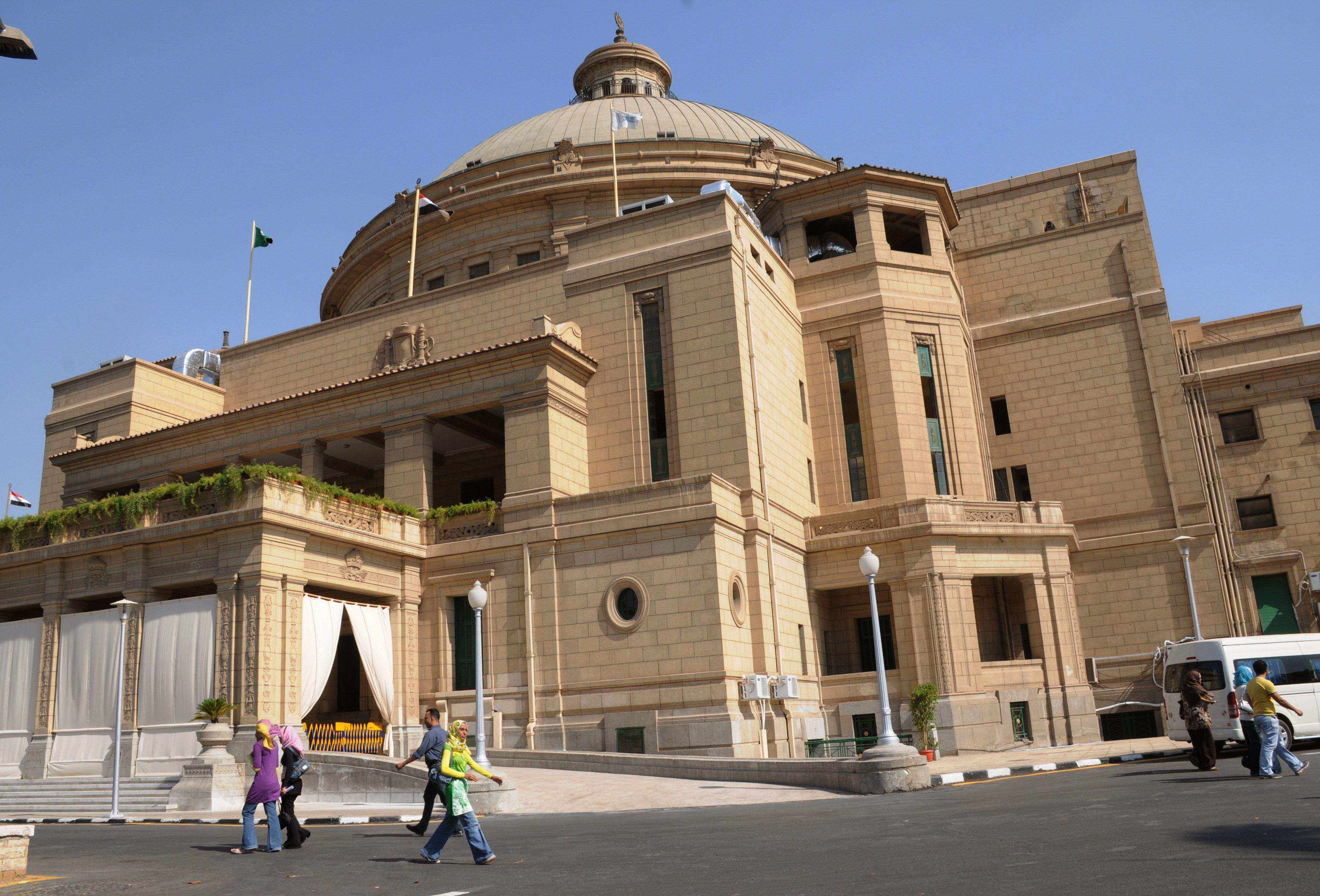Jazz pianist Bill Evans once said of his art form, “Jazz is a mental attitude rather than a style. It uses a certain process of the mind expressed spontaneously through some musical instrument.
French group Abraxas Projekt, with Jérôme Paressant on soprano and bass clarinet, electronics and thumb piano, and Antoine Hefti on drums, manifest Evan’s words as reality.
Listening to Abraxas provided one of the more contemplative moments one could hope to capture in Cairo. The band performed Friday night at the second annual Cairo Jazz Festival held at the Sawy Culture Wheel. This setting supplied much of the “mental attitude, or rather, Paressant and Hefti, with their back-up keyboardist, as they blended their music with the setting.
Yellow flowers floated down from the trees on the murmuring crowd gathered on the banks of the Nile in the lovely River Garden. The setting sun glowed on the heavy flesh of flame flowers threatening to fall into someone’s program. Fathy Salama, the famed Egyptian jazz composer, sat in the back, listening with his characteristically lazy smile.
The music lulled the audience into a state of hypnotized meditation, the bass clarinet seducing the senses into a deepening pool of quietude. Then, like a car horn tearing through the quiet buzz of a city, a sudden burst of energy from the drums broke the stillness. Although in Cairo the moments unpunctuated by car horns are rare enough that rarely does a sense of calm descend, still, the rhythmic flow of the music began to evoke the endless sounds of the surrounding city.
Seated beside the river, Cairo’s noise is mercifully muffled, and even the cars passing on the 15th of May Bridge felt less oppressive than atmospheric. The music seemed such a natural component of the environment that a man in galabeyya passing on the bridge overhead didn’t even glance down. It’s pleasant to imagine that the sounds of the instruments had blended so wholly with those of the humming streets that he did not even register the difference between melody and background noise. (He was fairly elderly though; he may have been deaf.)
Keeping their syncopation with the city, Abraxas ended their set just as the sunset azan (maghreb call to prayer) broke over the water.
The quiet mood of the audience – a few drummers thumping gently on their thighs in harmony, some swaying gently – seems to indicate their lack of enthusiasm. But how can one become excited about background noise?
“Jazz is such good thinking music, remarks an audience member. The invitation to contemplation results in Abraxas Projekt evoking a mood. One remembers their mood rather than their music.
Osam Ezzeldin on the other hand, demanded attention with a diva’s insistence. His music would better embody the statement by composer John Philip Sousa that “jazz will endure as long as people hear it through their feet instead of their brains.
His impressive ensemble includes a full drum set played enthusiastically by Kostas Anastasiadis, a second non-traditional drum set including congas played by Diaa Tass, and an electric six string upright bass strummed by Andrie Segone. Ezzeldin himself plays keyboard and sometimes a baby grand.
While all four musicians were undeniably accomplished, Ezzeldin insisted on the spotlight, and not without reason. His energy and talent force his band members to push themselves.
Their set began with a strobe light. Initially entertaining, then slightly maddening, the light seemed reflective of the dystopic sounds coming from the stage, most notably the keyboard.
The audience, having just come from the semi-stupor of a river sunset, was startled into wakefulness. The sense of building a mood with the audience’s help as achieved by Abraxas Projekt evaporated. This was not good thinking music, or even dancing music; Osam’s flair on the keys demanded rapt attention, precluding at times even the urge to tap a foot or sway a hip.
A friend remarked, “That’s why it’s called Osam Ezzeldin and friends; it’s supposed to be all about him.
Blame John Coltrane though, it was his piece. Perhaps the lack of Coltrane’s signature instrument, the saxophone, is also partially to blame.
Yet as the band continued, their occasional cacophony revealed itself as a foil for the underlying accord. The announcement of the upcoming piece, Coltrane’s “Giant Steps drew a rumble of appreciation from the audience, and by switching to the baby grand piano, Ezzeldin suddenly melded with his ever gung-ho “friends.
Coltrane’s “Like Sonny finally permitted a rhythm for the audience to dance a bit, again with Ezzeldin on the more forgiving baby grand. The same creation of a mood and a universe held between the bars of the music begins to seep likewise into River Hall, as both the musicians and audience relaxed into each other.
Jazz at its best, is seduction; sometimes sexy and slow, sometimes shocking, a lover that keeps your interest by their inconsistency.
It seems that Duke Ellington ultimately said it best, “By and large, jazz has always been like the kind of a man you wouldn’t want your daughter to associate with.
The successful second display of global jazz talent in Cairo leaves jazz enthusiasts and even the rest of us hoping that the Cairo Jazz Festival has become a permanent annual feature.
